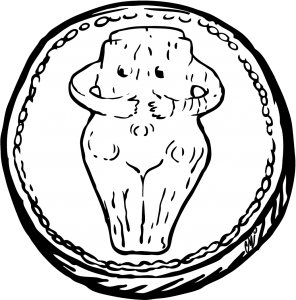The measure of time

Time. An ancestral subject for reflection and interrogation, time is also a pretext for deciphering and ordering, in a permanent system of human reality and perception. Time accompanies us permanently, being like a dome where scientific knowledge or social practice constantly find new meanings and significations in the development of the human condition.
Time is inextricably linked to space. It symbolizes a duration, a flow, measures our biological development, general social demands, condition of child, adult or student, professional factors; time measures the transition from birth to wedding and burial, accompanies the phases of physical and psychological life, life that becomes a past, a present and a future. Individually, the inner self can also experience this impalpable and invisible flow by the ratio real time ‒ perceptual time. The latter may contract or/ and dilute depending on the feeling and assimilation of one’s own experiences. The time perception of a young man being in the first third on the time scale of existence is that of a small past compared to a likely large future. For the elderly, the sequence of events that might produce novelty is perhaps smaler, and the attitude towards time more passive. Psychological time is uneven and non-linear, it is a subjective time; for example, for Einstein time exists so that things do not happen at the same time; for Nietzsche, time is the fire where we all burn our existence, and for Martin Luther King it is always the right time to do what is right.
Measuring time has been a man’s concern since the earliest times, as evidenced by Sumerian calendars, obelisks, ancient hourglass, candle clock, evolving to the first public clock or portable clock. Objective mechanical time was born out of the need to synchronize people’s actions, diversified the perception of natural time (day‒night), the cyclical alternation of seasons, developing landmarks that take into account human activity at a time of day. Along with the chronometry, which designates the cyclicity by calendar, day, week, etc., the chronology, world of the clock, has also developed. An instrument that measures a man’s activity and life, the watch checks his habits and relationships with the things around him, indicates his stability, passivity through waiting and adaptation, can measure the obsession with control and accuracy, performance and precision, efficiency, speed–experience and daily life of our society.
Time measure aims to reveal, through the objects on display, i.e., watches of all typologies (pocket, office, wall, fireplace clocks, etc.) the relationship between technology and manufacturing, areas that have influenced and determined each other from an aesthetic and functional point of view. The relationship clock‒environment will be made visible in the exhibition by juxtaposing objects of orology with those of decorative art, supplemented by panels with different definitions of time, quotes of celebrities from the scientific and humanities world, and others that index different curiosities specific to the subject.
The exhibition analyzes and capitalizes, from the heritage collections of MMB, a large number of objects, watches produced since the 17th century to the present, created in famous European workshops and bearing signatures like: Thomas Tompion, Robert Brandt, George Prior, Japy Frères, Doxa, Longines, etc. along with decorative art pieces, craftsman products (candlesticks, pedestals, mirrors, furniture) and photographs, all bearing stories, later becoming pieces of history and accompanying, as witnesses, the environment and the human existence of their time.
The exhibition not only brings into question the order of time, which Carlo Rovelli has come to doubt so much, but which he has not yet been able to prove, reflecting on the disaggregation of time, but also confirms what the Italian physicist claims with certainty: Perhaps time is the greatest mystery…
Curators: Cristina Vasiliu, Loredana Mocanu – Heritage and Centralized Register Office

